The Worst Space Shuttle Disasters and Accidents in Space: The High Price for the High Ambition
25th Mar 2024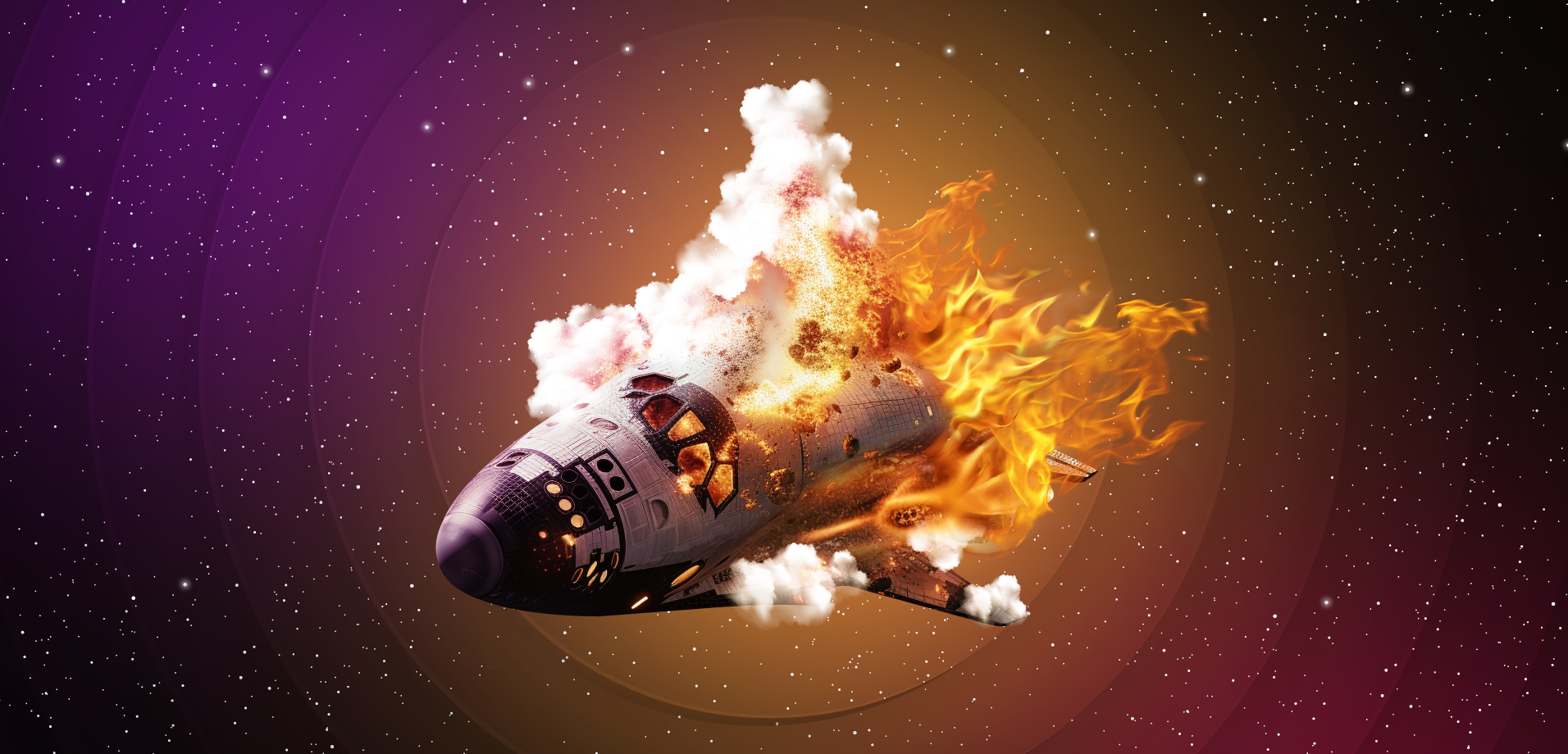
Space exploration is one of mankind’s achievements, and we should be proud of it. But what price have we had to pay for this ambition? According to official statistics on space accidents and incidents, more than 300 people have died during the preparation and implementation of space flights and unsuccessful rocket launches.
We’ve previously written about the astronauts, who died in space. In this article, we will talk about the dangers of space and the 12 most tragic space disasters to which they led.
What are the biggest risks in space?
Space is an extremely hostile environment in which astronauts face many dangers. Unfortunately, we learned about many of them only as a result of past mistakes, including those that became fatal. So, what emergencies can happen in space?
Radiation and microgravity
Outside of the Earth, a person is exposed to solar radiation and weightlessness. Both are dangerous to health and, in large doses, are fatal. Spending several months in orbit increases the risk of heart rhythm and circulatory problems that can lead to ischemic stroke or heart attack. Embolism, massive haemorrhage, formation of kidney stones, infections, loss of bone and muscle mass, etc., are also possible. Of course, astronauts prepare for flights well, but it is still impossible to completely eliminate health risks.
Ship systems failure
Failure of the ship’s control system is one of the main reasons for space disasters because it makes it impossible to orient the ship in space, calculate docking coordinates, etc. If antennas are damaged, communication with the MCC can be lost. The MCC is not only the astronauts’ eyes and ears but also the source of rapid solutions to many potential problems. A failure in the life support system poses a direct threat to astronauts.
For example, in 1970, equipment problems nearly cost the Apollo 13 astronauts their lives. The lunar landing had to be cancelled, and only the heroic efforts of the crew and the MCC ground team made it possible to complete the mission without casualties. You can read more about this space accident in our article Unlucky Number: What Really Happened To Apollo 13. If you haven’t read it yet, be sure to do so.
Depressurization
An astronaut can be killed by even a small fragment of a meteorite or space debris because they move in orbit at crazy speed. If the ship’s hull fails, the crew will die. The only air on board is what astronauts bring with them from Earth. Depressurization threatens rapid death from cold, radiation, or lack of oxygen.
If the integrity of a spacesuit is compromised in outer space, the liquid in the human body will begin to boil as the gases it contains expand. Depending on the extent of the damage, death can occur within seconds.
For example, during the STS 37 mission in April 1991, Astronaut Jay Apt, while working outside the spacecraft in outer space, accidentally punctured his spacesuit with a small rod in the glove of an extravehicular mobility device. Fortunately, the astronaut was able to close the puncture with his hand and prevent depressurisation quickly.
Drowning and blindness
Do not be surprised. This is possible in a spacesuit. Italian astronaut Luca Parmitano experienced this to the fullest when, during a spacewalk in 2013, his helmet suddenly began to fill with water. As it later turned out, water came from the cooling system and accumulated in the helmet. The astronaut was forced to urgently return to the ISS to avoid choking.
During a spacewalk in 2001, Canadian astronaut Chris Hadfield felt irritation in his left eye, which began to water. Tears gathered in a bubble that closed the right eye. He was practically blind while in outer space, and that — with a drill in his hands. Although running out of air was risky, purging the system solved the problem. As it turned out, the irritation was caused by the leakage of a special mixture that serves to prevent the visor from fogging.
Risk of getting lost in space
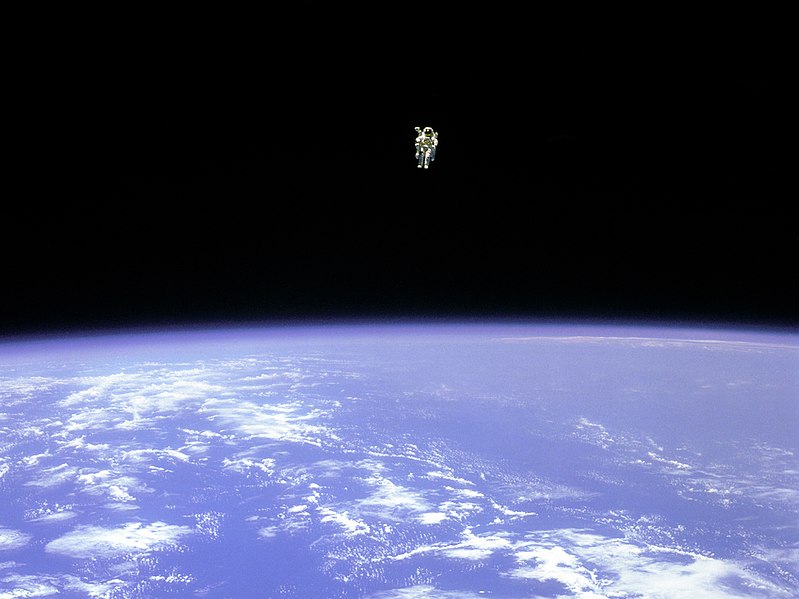
When working in outer space, astronauts always attach themselves to the spacecraft with braided steel cables and work in pairs to support each other. However, in movies about space, one of the most common space disaster scenarios is when the cable turns off due to a collision with space debris. If this happens, you are unlikely to be able to return to the ship and will remain forever drifting in space, enjoying its beauty, until, of course, the oxygen in your spacesuit runs out.
Fortunately, such fatal space incidents have not occurred in real life, but there were other dangerous situations.
In 1965, Soviet cosmonaut Alexei Leonov, during the first spacewalk in history, encountered a problem that could have cost him his life. The suit was greatly inflated due to the pressure difference (0.35 of the atmosphere inside, zero — outside), due to which he was unable to crawl into the hatch. As a result, Leonov had to let the air out, and it worked.
That same year, something similar happened to Ed White, the first American to perform a spacewalk. He returned to the ship normally but, for some time, could not lock the entrance hatch to the fully closed position due to a defective spring. If the astronaut had failed to close the hatch, his Gemini IV spacecraft would not have returned to Earth. In addition, the ship’s commander, James McDivitt, who was inside the capsule, received instructions from Earth to cut White’s cable if he ran out of oxygen or lost consciousness.
As we can see, space is full of dangers; however, statistics show that most accidents occur not in orbit but during the pre-launch stages, at the time of launch or landing. Let’s look at the 12 biggest disasters in space exploration.
US space disasters
NASA managed to overtake its competitors in the number of manned spaceflights, but this achievement came at a high price.
Titan Fall, 1965
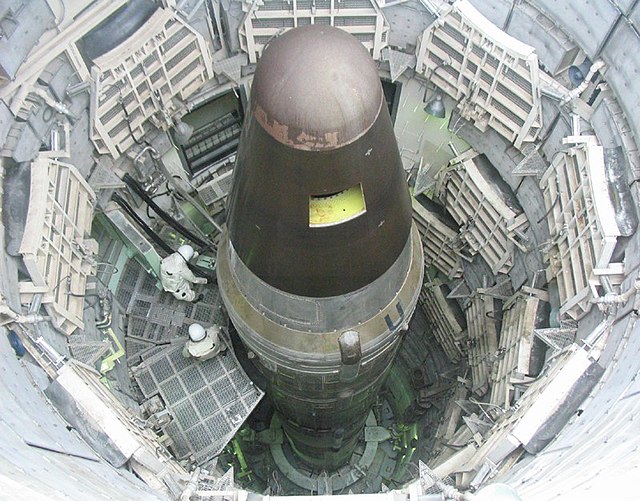
In the summer of 1965, near the American city of Searcy in the state of Arkansas, the first huge American disaster not in space but connected to space industry occurred. On August 8, 55 Peter Kiewit and Son contract employees descended into one of the LGM-25C Titan-2 intercontinental ballistic missile launch silos to carry out work on the Project YARD FENCE modernization program.
While performing welding work, one of the workers accidentally damaged an oil hose with a cutter. Oil under pressure sprayed out and burst into flames. Smoke and toxic fumes quickly filled the premises, panic and stampede began, and people did not have enough time to get out. 53 workers died within five minutes. The rocket itself, fortunately, was not damaged. Otherwise, there could have been more casualties; the personnel also worked on the surface.
The final report from the Commission of Inquiry indicated that in addition to the fire, poor ventilation and ill-designed escape routes were the cause of the workers’ terrible deaths. In addition, workers violated safety requirements. The hydraulic flush hoses were not protected. There were no fire extinguishers at the fire site. There were cigarettes, lighters, and other prohibited items at the workplace. Local firefighters were not familiar with the layout of the complex, so they were unable to react in time.
On August 13, all work on the YARD FENCE project at the mine complexes was stopped. Twenty years later, a monument was erected at the entrance to the Little Rock airbase with the names of the victims, sponsored through private donations.
Apollo explosion, 1967
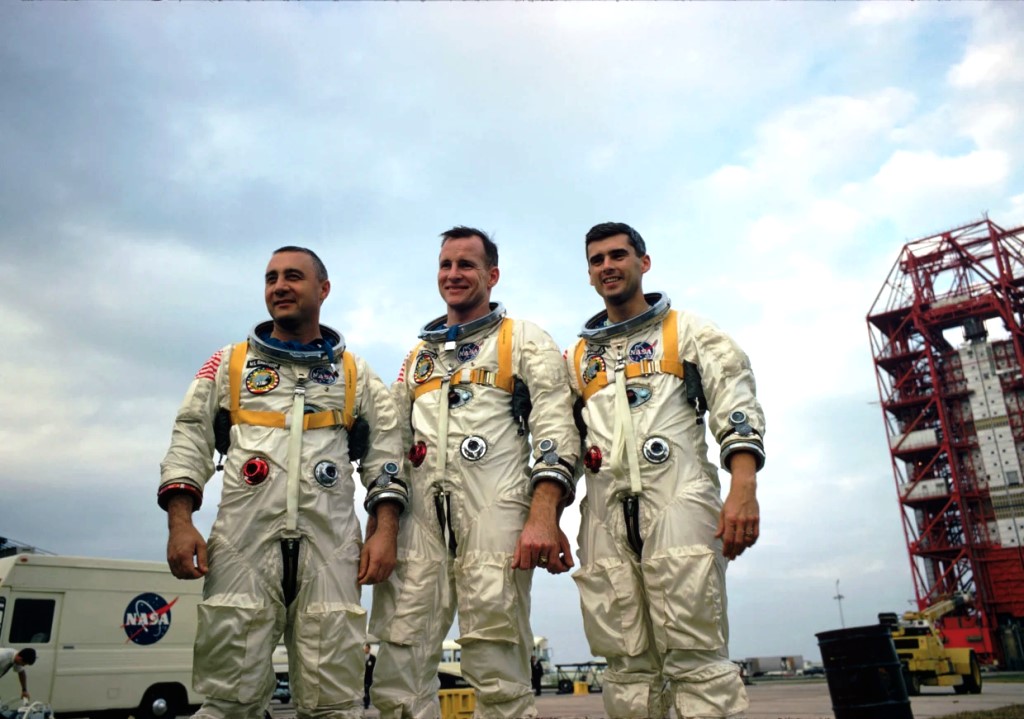
In the second half of the 70s, the USA was actively preparing to land astronauts on the Moon. In 1966, the unmanned Apollo lunar spacecraft was successfully launched, and the first launch of the spacecraft’s manned version was planned for late February 1967. To begin crew training, the first version of the command module was delivered to Cape Canaveral. The problems started from the very beginning — the module was seriously flawed, and the engineers made all the necessary changes on the spot.
On January 26, 1967, the crew that would be the first to fly to the Moon died in a fire during a simulation exercise in the ship’s command module, filled with pure oxygen. Apollo 1 astronauts Virgil Grissom, Ed White, and Roger Chaffee burned to death in a matter of seconds, unable to escape due to cramped conditions, panic, and the inconvenient design of the hatch, which opened inward. The official cause of the fire was a spark from a short circuit, likely caused by poorly insulated wiring.
The Apollo explosion hit NASA’s reputation hard. The launch of the first manned mission to the Moon had to be postponed, and the spacecraft design had to be seriously revised. All materials in the command module were replaced with non-flammable ones, including Teflon coating on the wiring, the composition of the artificial atmosphere was changed to a mixture with 40% nitrogen, and the hatch opening was changed to the outside.
What was the biggest US tragedy in space? Challenger catastrophe of 1986
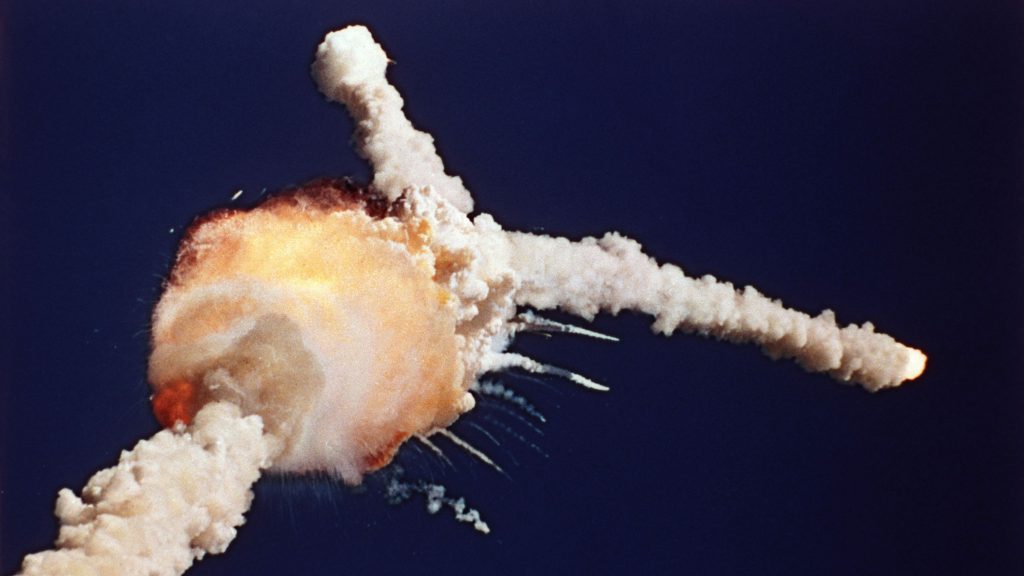
In the mid-1980s, the Space Shuttle program experienced unprecedented growth. The launches were carried out so often that the breaks between them sometimes did not exceed 20 days. The Challenger shuttle had completed nine successful missions before its tragic flight.
On the morning of January 28, 1986, the Challenger rocketed into the sky from Cape Canaveral to the applause of enthusiastic onlookers. Christa McAuliffe, winner of NASA’s Teacher in Space competition, was on board. She had to teach two live classes, so a huge number of people watched the launch livestream.
After just over a minute, the audience’s admiration gave way to bewilderment and horror. At an altitude of 14 km, the shuttle began to fall apart. The cause was damage to the O-ring of the right solid fuel accelerator during take-off. Because of this, a hole formed in the accelerator housing, allowing a jet stream to escape, destroying the external fuel tank and igniting fuel components.
Were Challenger astronauts alive after the explosion? Unfortunately, no. The rescue expedition discovered that three of the seven crew members did not die when the ship started to fall apart, as they managed to turn on their personal air supply systems. However, they did not survive the fall into the water at enormous speed. If the shuttle had an ejection system at that time, they probably could have escaped, but such a system was not provided.
Columbia accident, 2003
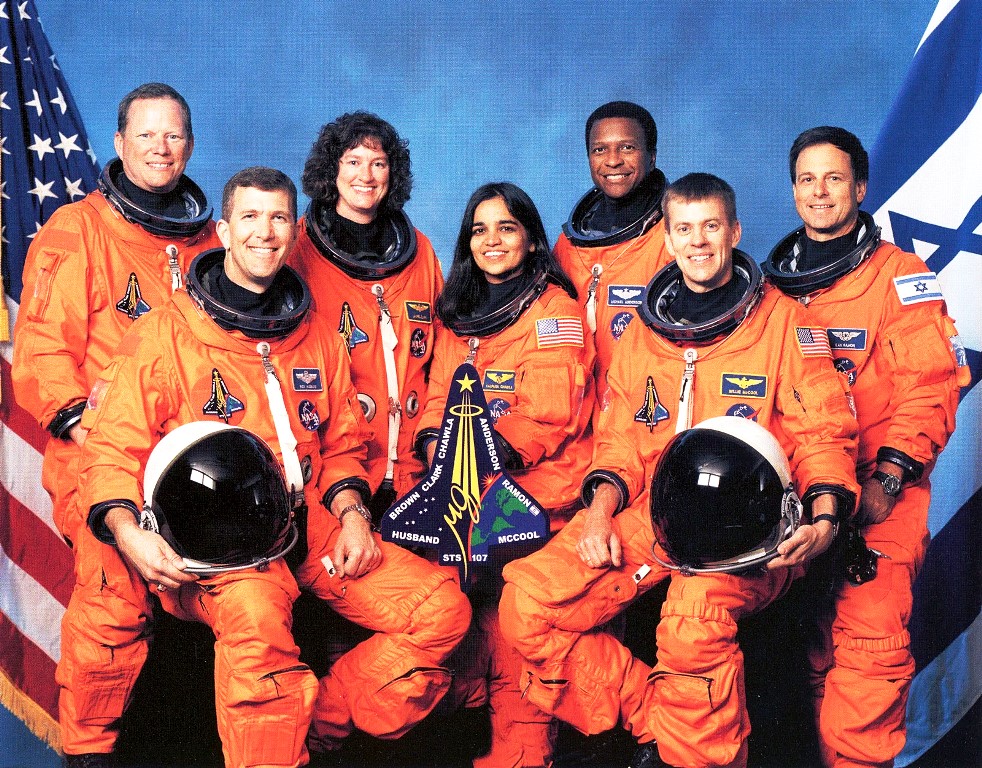
On February 1, 2003, the last of the worst NASA accidents in space occurred. Shuttle Columbia STS-107 was returning home after a 17-day science mission that included numerous microgravity experiments. This was the 117th flight of the Shuttle program and the 28th flight of Columbia. The crew was international and consisted of experienced astronauts: Rick Husband, William McCool, Michael Anderson, David Brown, Laurel Clark, Kalpana Chawla (a female astronaut of Indian origin), and Ilan Ramon (Israel’s first astronaut).
There was no sign of upcoming trouble. The ship began re-entering the atmosphere, and the flight proceeded as normal but soon turned into one of the most terrible disasters in space.
First, the temperature sensor on the Columbia’s left wing transmitted anomalous values to the control centre. Then, four hydraulic system sensors in the same wing showed the lower permissible limit, and after five minutes, communication with the ship was interrupted.
While NASA was arguing about what happened, one of the TV channels was already live-streaming Columbia engulfed in flames and falling apart. The cause of the space shuttle explosion was damage to the left wing coating, caused by a piece of thermal insulation from the oxygen tank falling on it during take-off. As a result, overheating of the left landing gear pneumatics during re-entry led to its explosion and destruction of the wing structure, and then the entire ship. None of the astronauts survived.
There were no other space shuttle disasters. A temporary ban was imposed on shuttle flights, and in 2011, the programme was finally closed as posing a high risk to the astronauts’ lives and unprofitable in terms of upgrades.
Russian space disasters
The Soviets were the first to launch a Sputnik satellite and a man into space, so they sought to maintain their advantage at all costs. Unfortunately, excessive haste and negligence in the preparation of many missions led to dozens of deaths of both Soviet astronauts and ground personnel.
Nedelin catastrophe, 1960
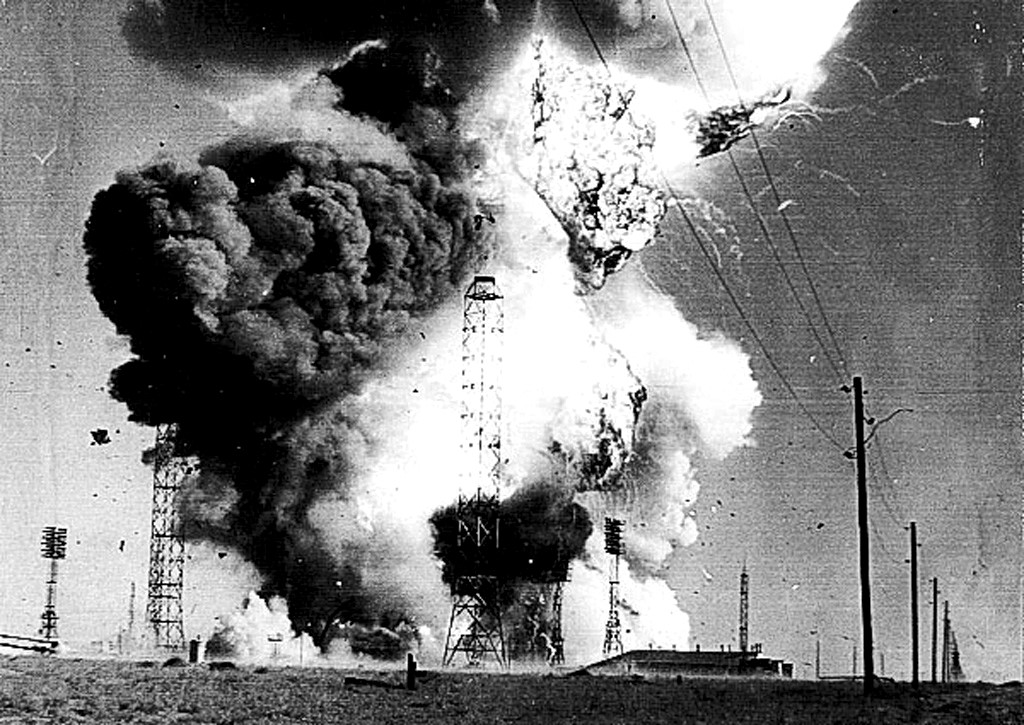
One of the biggest space disasters in history occurred on October 24, 1960, at the Baikonur spaceport in Kazakhstan. The unsuccessful test launch of the R-16 intercontinental ballistic missile claimed the lives of, according to various sources, from 78 to 126 people. The rocket had many flaws and defects, but Marshal Nedelin, who led the test, did not cancel the launch.
Moreover, to emphasize the safety of the event, he and other project participants positioned themselves just 17 meters from the launch pad. A 30-minute readiness was announced, but due to a failure of the software’s current distributor, an unauthorized start of the second-stage engine occurred. The fiery jet destroyed the first-stage fuel tanks, and an avalanche-like fire began. Waves of flame spread with great speed. Burning people jumped out of the fire and ran in all directions. The rescue operation could begin only two hours later, when the remains of the rocket and structures were almost burned out. At the time of the disaster, almost everyone who was near the fire site died — 57 military personnel and 17 officials. About 50 more people were injured, some of whom later died from their injuries.
All data about this space disaster was strictly classified, and the Soviet media first mentioned it in 1989.
Soyuz-1. 1967
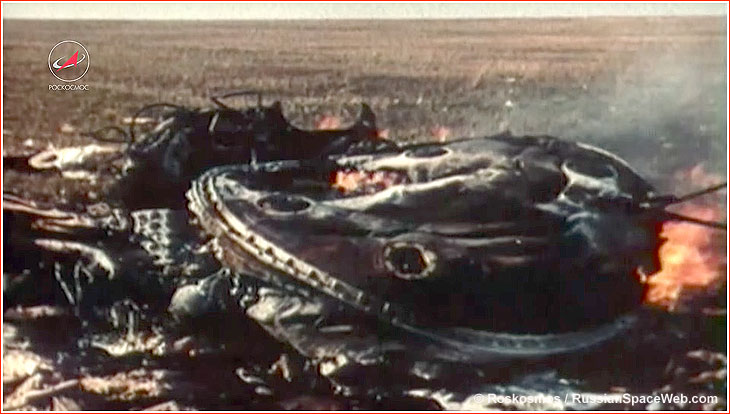
With NASA’s Apollo program underway, the Soviets urgently needed a new manned spacecraft capable of replacing the outdated Vostok and potentially taking Soviet astronauts to the Moon. The Soyuz spacecraft, which began development in the early 1960s, was chosen for this purpose.
Despite the design flaws, the Soviet space industry’s leadership decided not to shelve the first manned Soyuz mission. On April 23, 1967, the ship with Vladimir Komarov on board successfully entered orbit. Soyuz-1 was supposed to dock in space with Soyuz-2. However, one of the Soyuz-1 solar panels did not open, and the Soyuz-2 mission was cancelled.
On April 24, Komarov received an order to return to Earth, which he did almost manually due to the ship’s orientation capabilities not being developed enough. This was Komarov’s second space flight. Thanks to his professionalism, re-entry went smoothly, but at the last stage of landing, the main parachute did not open. The spare worked, but its lines got tangled, and the ship soon crashed into the ground at a speed of 55 m/s.
The Soviet cosmonaut became the first to die during a space flight. After this space incident, the Soyuz program was suspended for 18 months. Many design improvements were made, and the braking system was tested on 6 unmanned launches.
Soyuz-11, 1971
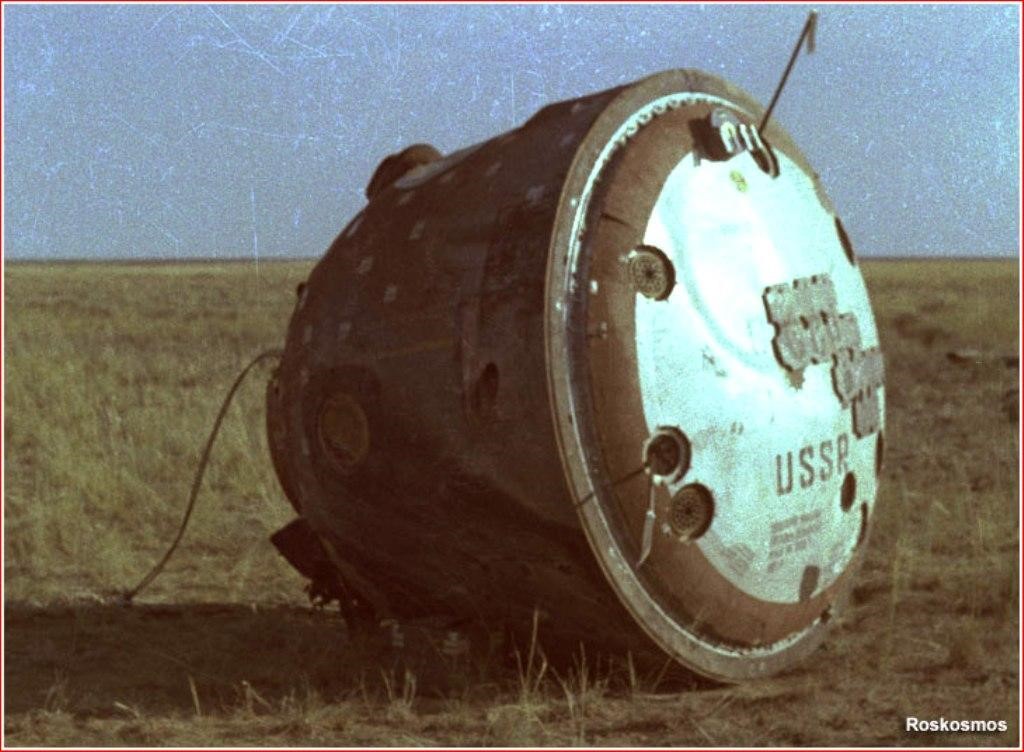
After the collapse of the manned Soviet “lunar programme,” its participants were transferred to flights to the manned orbital station “Salyut-1”. The Soyuz 11 mission, launched on June 6, 1971, was the second of this project.
The flight programme was designed for 24 days. The main task of cosmonauts Georgy Dobrovolsky, Vladislav Volkov, and Viktor Patsaev was to successfully carry out docking and a series of scientific experiments. The crew worked at the station for 11 days, but after a serious fire, the astronauts were ordered to return.
Atmosphere re-entry, braking, landing — outwardly, everything went normally, but the astronauts did not answer any questions from the control centre. When the hatch of the spacecraft was opened, all crew members were found dead. It turned out that they died from decompression as a result of the ship depressurizing at a high altitude.
It turned out that one of the ventilation valves, which equalized the pressure during descent, opened prematurely. Spacesuits could have saved the astronauts’ lives, but they were not provided for.
The death of the Soyuz-11 astronauts became the second-worst space accident after Apollo 1 and forced the Soviets to, once again, seriously reconsider their approach to manned spaceflights. The decision bore fruit. Soyuz became a key component of the Soviet and Russian manned space exploration programmes and performed more than 130 successful launches. After the end of the Space Shuttle programme in 2011 and until the first flight of the SpaceX Crew Dragon in 2020, Soyuz remained the only means of delivering crew and cargo to the ISS. They still fly today.
Plesetsk, 1980
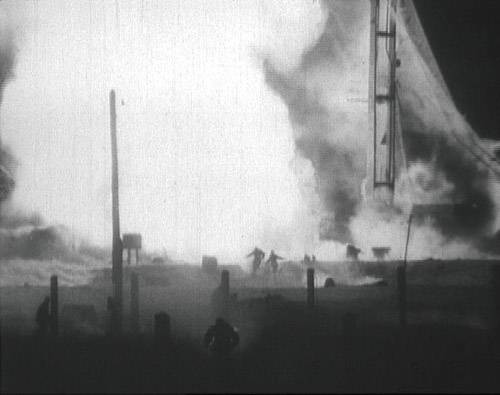
On March 18, 1980, at the Plesetsk cosmodrome, the Vostok-2M rocket with the Icarus spy satellite on board was preparing to launch. There was refuelling with kerosene, liquid oxygen, nitrogen, and hydrogen peroxide (a total of 300 tons). At the last stage, a fire occurred in the third stage area, causing an explosion below zero and a widespread fire. During the fire, 3-4 more explosions occurred. At the time of the disaster, there were 141 people on the launch pad. 44 died immediately, 4 died later in the hospital, and another 43 received burns of varying severity.
Only 16 years later, an independent investigation identified the use of catalytically active materials in the design of fuel filters for hydrogen peroxide as the cause of this space disaster.
Buran tragedy. 2002
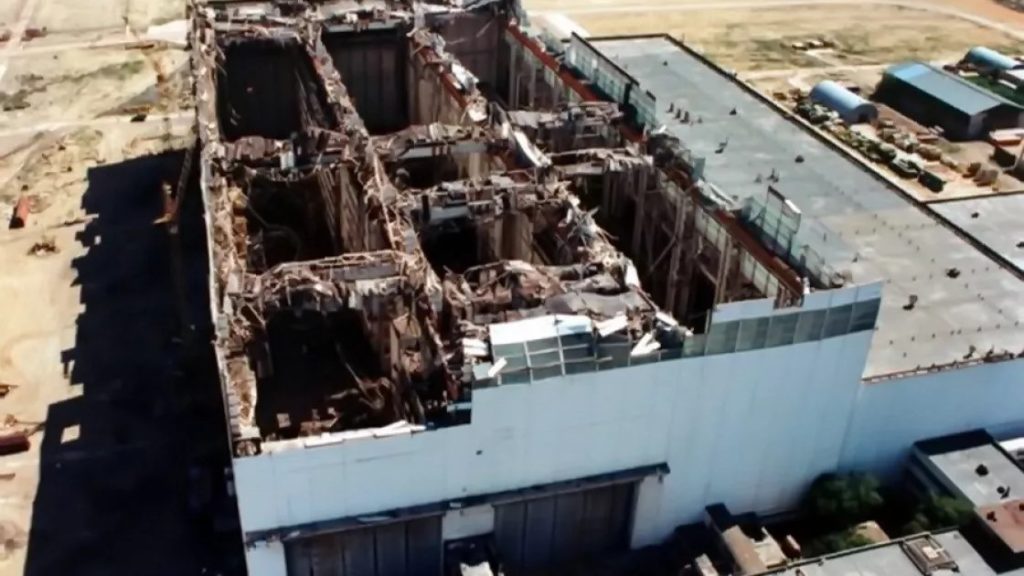
On May 12, 2002, a tragedy occurred at the Baikonur Cosmodrome that claimed the lives of 8 people and forever buried the Buran spacecraft, created by the Russians as a counterweight to the Space Shuttle programme.
Since the beginning of May 2002, a Kazakh subcontractor company has been repairing the constantly leaking roof of the Energia-Buran complex, which is an industrial structure measuring 240x120x56 m.
On Sunday, May 12, a team of 8 workers loaded 10 tonnes of roofing felt onto the complex roof. But the rolls were stacked on top of each other, due to which the entire load fell on one, the outermost truss. At 09:40 local time, it could not hold any longer and collapsed on one of the tanks of the Energia launch vehicle. The collapse caused an “air explosion”. Following the first truss, all the other trusses fell, causing a total collapse of the roof over an area of 28,800 square meters. All eight workers and the Buran ship were buried under the rubble.
The investigation concluded that although the first truss fell due to a violation of the work technology by the Kazakh firm, its fall should not have caused the collapse of the entire building. The complex collapsed due to mistakes made in the construction project.
Most terrible space disasters that occurred in China, Brazil and India
The USA and Russia are not the only countries that have had fatal space accidents. This fate befell almost all participants developing their space flight programmes.
Xichang (China), 1996
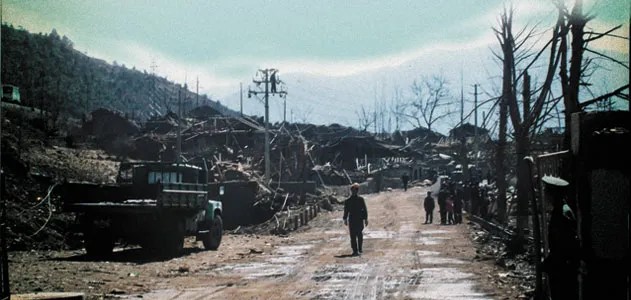
On February 14, 1996, the Chinese Long March rocket, Chang Zheng 3B, was supposed to launch an American communications satellite, Intelsat 708, into orbit from the Xichang spaceport in southwestern China. Shortly after launch, the launch vehicle began to tilt, and 22 seconds later, it exploded and fell on a nearby village.
Official authorities reported 6 dead and 57 injured, but there is a version that the disaster claimed the lives of over 100 village residents. Immediately after the rocket crash, hundreds of Chinese soldiers and military equipment flooded the residential complex, and American Intelsat officials suspected that one of their main tasks was removing the bodies. Witnesses from Xichang later described scores of flatbed trucks carrying what appeared to be covered human remains, as well as dozens of ambulances, to the military base and city hospitals.
At first, Chinese authorities tried to blame this space disaster on external influences but later admitted that the cause was damage to the wiring in one of the engines, which caused a fire.
Alcântara (Brazil), 2003
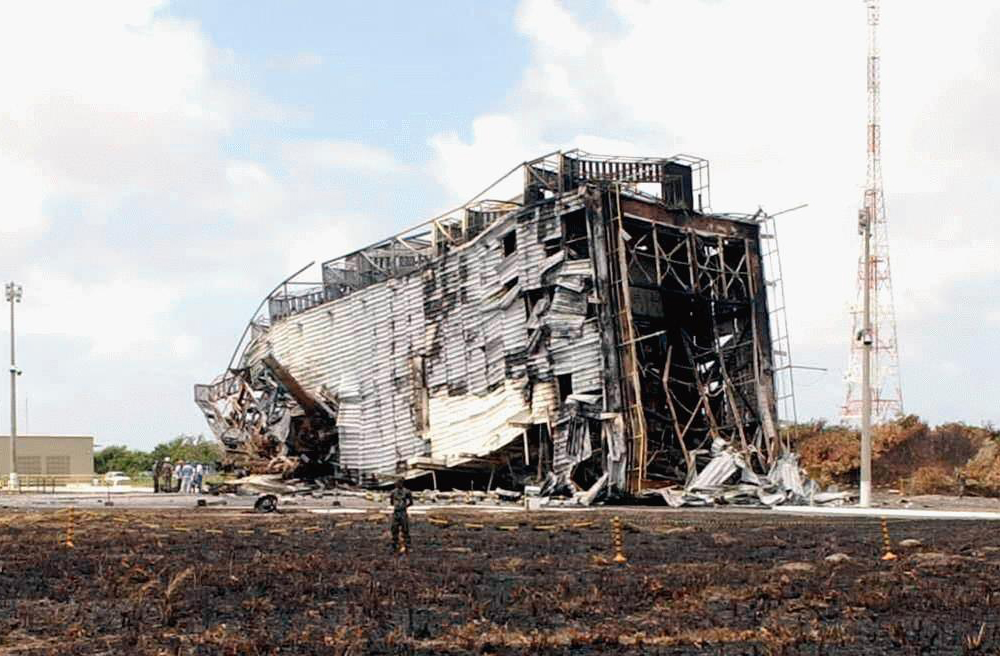
On August 22, 2003, Brazil was to become the first space power in Latin America. After three unsuccessful attempts, the country had high hopes of launching the VLS-3 rocket with two satellites on board.
Final tests were carried out at the Alcântara launch site, with about 100 people working close to the rocket. Suddenly, one of the four engines of the rocket’s first stage turned on, and the flaming torch shooting out of it set fire to the neighbouring engines. The fire spread, causing the fuel tanks to explode. The rocket and the 10-section launch pad structure collapsed like a house of cards, killing 21 people.
The investigation established that the cause of the accident was an electrical discharge unauthorizedly supplied to the ignition system of one of the four first-stage accelerators. It was impossible to conclusively determine what caused the signal.
Sriharikota. India. 2004
On February 23, 2004, at the Indian Satish Dhawan Space Center on the island of Sriharikota, a devastating accident occurred, killing 6 employees of the centre. The incident occurred while a nine-person team was preparing a segment of test fuel for transportation after its solidification. During these operations, fuel in the segment accidentally ignited, causing an explosion. Six people died on site. The remaining three were able to leave the building with burns and were immediately taken to the hospital, where they received all the necessary medical care. The explosion was so powerful that it destroyed a 76-foot-tall building, left a 20-foot-deep crater, and was visible over a 25-kilometer radius.
Despite the enormous damage, the incident did not affect the Indian space programme, but did force ISRO to take some additional safety measures to operate its solid-fuel rocket engines.
Conclusion
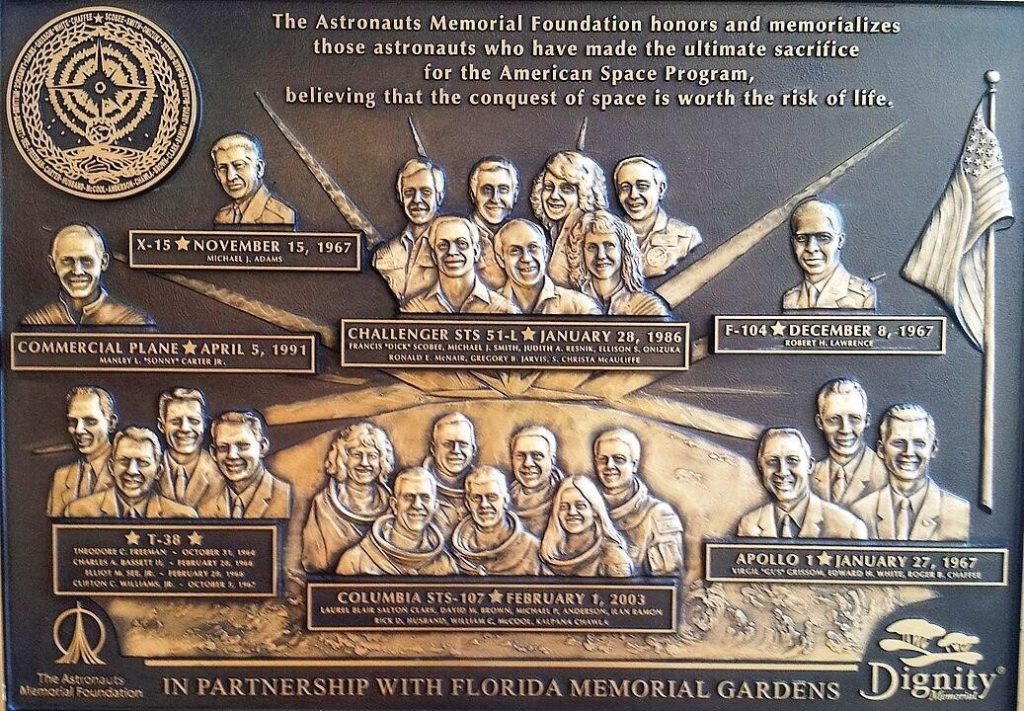
Space shuttle disasters and other accidents were a high price to pay for space exploration, but each was not in vain. Today, we have achieved capabilities that allow us to plan colonization of the Moon, tourist suborbital flights, hotels in orbit, landing on Mars and even space mining for the foreseeable future. And we will always owe these achievements to every fallen hero. Let us honour their memory and hope that no more space disasters will mar our journey to the stars.
References and Additional information:
● The Challenger STS-51L Accident
https://www.nasa.gov/challenger-sts-51l-accident/
● Remembering the Columbia STS-107 Mission
https://www.nasa.gov/remembering-columbia-sts-107/
● Apollo-1 (204)
https://www.nasa.gov/history/Apollo204/
● Detailed Chronology of Events Surrounding the Apollo 13 Accident
https://history.nasa.gov/Timeline/apollo13chron.html
● Russia marks 50 years since horrific space launch disaster
https://phys.org/news/2010-10-russia-years-space-disaster.html
● Nedelin disaster
https://www.russianspaceweb.com/r16_disaster.html
● Soyuz 1
https://www.spacesafetymagazine.com/space-disasters/soyuz-1/
● Russian space disaster revealed. 29 March 1995
https://www.flightglobal.com/russian-space-disaster-revealed/16793.article
● ISRO Sriharikota tragedy raises safety concern at other space centres
https://www.indiatoday.in/magazine/science-and-technology/story/20040308-sriharikota-space-centre-blast-raises-safety-concern-at-other-scientific-establishments-790496-2004-03-07
● Disaster at Alcântara: The Explosion that Hindered Brazil’s Ascent as a Space Power
https://universemagazine.com/en/disaster-at-alcantara-the-explosion-that-hindered-brazils-ascent-as-a-space-power/
● Disaster at Xichang. Anatoly Zak February 2013
https://www.smithsonianmag.com/air-space-magazine/disaster-at-xichang-2873673/


![[UPDATE] Boeing’s Starliner Capsule Primed for Launch Atop Atlas V Rocket! [UPDATE] Boeing’s Starliner Capsule Primed for Launch Atop Atlas V Rocket!](https://orbitaltoday.com/wp-content/uploads/2024/03/Starliner-1-300x169.jpeg)

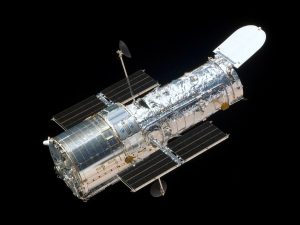

Thank you for your comment! It will be visible on the site after moderation.